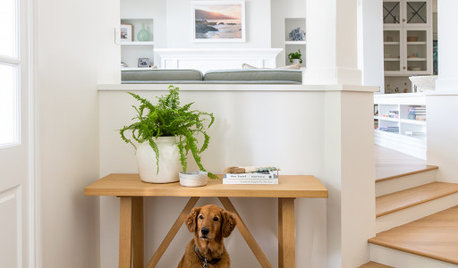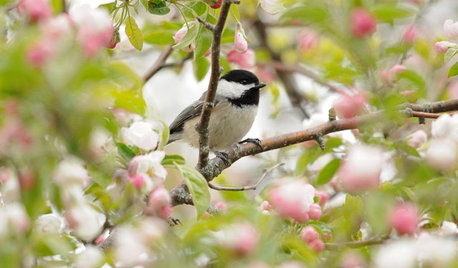What is wrong with my fiddle leaf fig plant?
HU-948828018
last year
last modified: last year
Related Stories

HOUSEPLANTSPlay Up Some Fiddleleaf Figs for a Lively Indoor Tune
Strike a dramatic chord in a minimalist scene or a country note in a rustic setting — fiddleleaf fig plants harmonize with any style
Full Story
HOUSEPLANTSSee How Fiddleleaf Fig Trees Can Liven Up Your Decor
The tropical houseplant with big green leaves adds a cheerful and striking design element to rooms
Full Story
HOUSEPLANTS10 Top Plants to Grow Indoors
Brighten a room and clean the air with a houseplant that cascades artfully, stretches toward the ceiling or looks great on a wall
Full Story
HOUSEPLANTS8 Essentials for Healthy Indoor Plants
Houseplants add so much to our homes — and can thrive when grown in the right conditions. Keep these tips in mind
Full Story
CONTAINER GARDENSContainer Garden Basics: How and When to Water Potted Plants
Confused about soil moisture, the best time to water and what watering device to use? This guide can help
Full Story
ARBOR DAY8 Reasons to Plant a Great Tree
Beauty is its own reward, but the benefits of planting the right tree in the right place go way beyond looks
Full Story
DECORATING GUIDESA Glimmer of Gold Leaf Will Make Your Room Shine
Make a unique, unexpected statement in any space with this precious metallic finish
Full Story
CONTAINER GARDENSConsider These 10 Pet-Safe Houseplants
Help keep cats and dogs healthy with the right selection of indoor plants
Full Story
LANDSCAPE DESIGN10 Ways to Make Your Landscape More Environmentally Friendly
From creating wildlife highways to planting pretty pollinators, there are lots of simple ways to be green in the garden
Full Story
CONTAINER GARDENSHappy Houseplants, Happy People
Potted plants add life and beauty to a room. Learn easy ways to keep them healthy
Full StoryMore Discussions













tapla (mid-Michigan, USDA z5b-6a)
HU-948828018Original Author
Related Professionals
Windham Landscape Architects & Landscape Designers · Bethlehem Landscape Contractors · Elgin Landscape Contractors · Pottstown Landscape Contractors · Aberdeen Landscape Contractors · Azalea Park Landscape Contractors · Barrington Landscape Contractors · Fairhope Landscape Contractors · Kaneohe Landscape Contractors · Las Vegas Landscape Contractors · Northbridge Landscape Contractors · Wethersfield Landscape Contractors · San Pablo Landscape Contractors · Westbury Interior Designers & Decorators · Fairfax Handymantapla (mid-Michigan, USDA z5b-6a)
tapla (mid-Michigan, USDA z5b-6a)